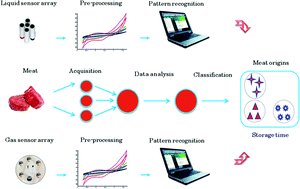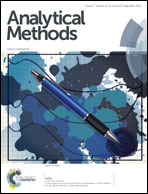Instrumental assessment of red meat origins and their storage time using electronic sensing systems
Abstract
Objective and rapid electronic sensing systems for distinguishing among meat species and identifying the degree of spoilage have been developed. A metal oxide sensor-based electronic nose system consisting of six sensors is designed and used to analyze the headspace emanating from beef, goat and sheep meats stored at 4 °C. A rapid, non-destructive technique based on the electronic tongue system formed by seven working electrodes is also applied and used to analyse the fingerprint of the electrochemical compounds of the three meat samples. Data analysis is performed by two pattern recognition methods: Principal Component Analysis (PCA) and Support Vector Machines (SVMs). Discrimination and classification function analyses are performed on the response of the electronic nose and electronic tongue systems to each of the three red meats. The obtained results show that the three red meats can be distinguished and the number of days spent in cold storage can be identified.


 Please wait while we load your content...
Please wait while we load your content...